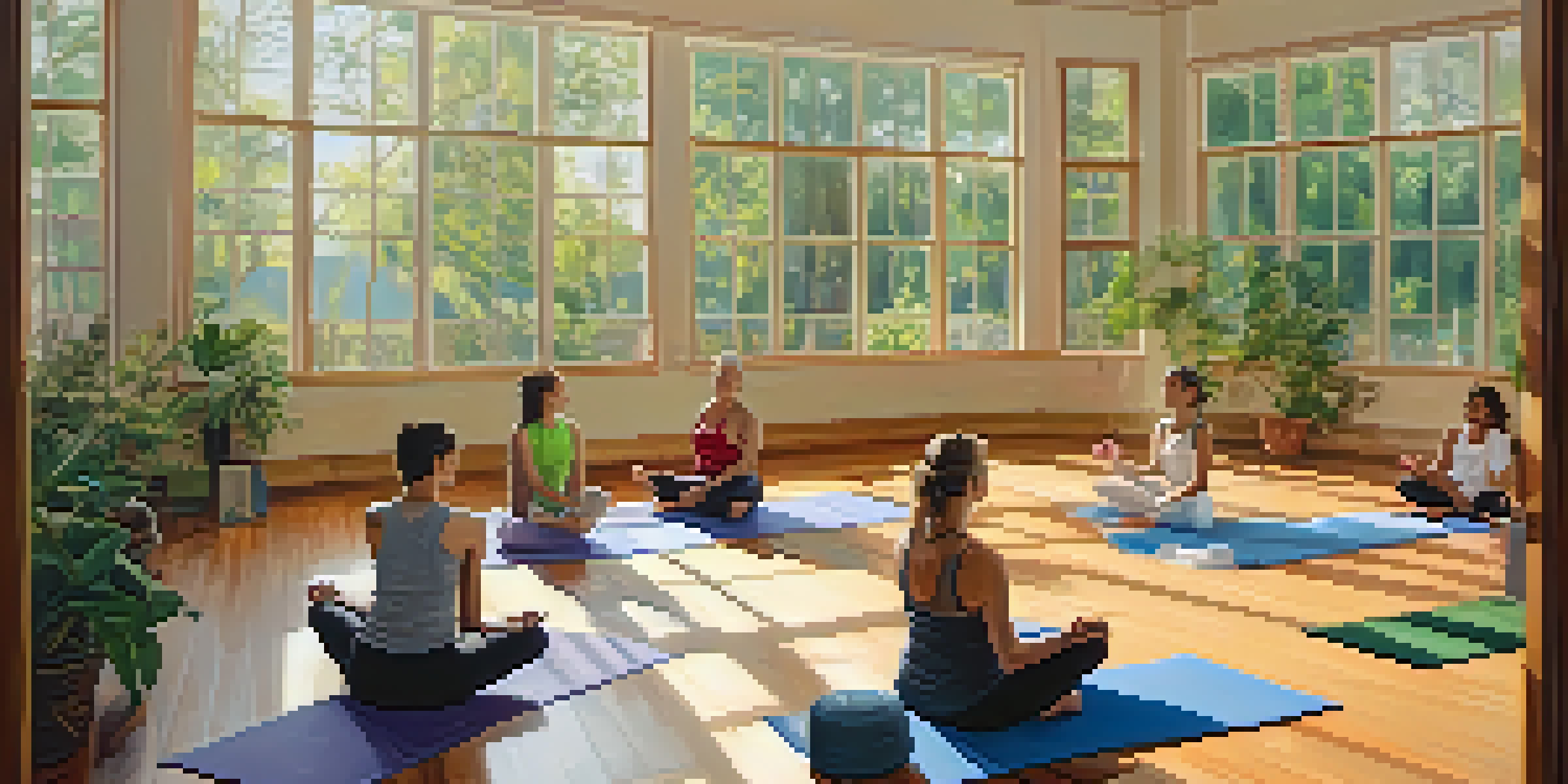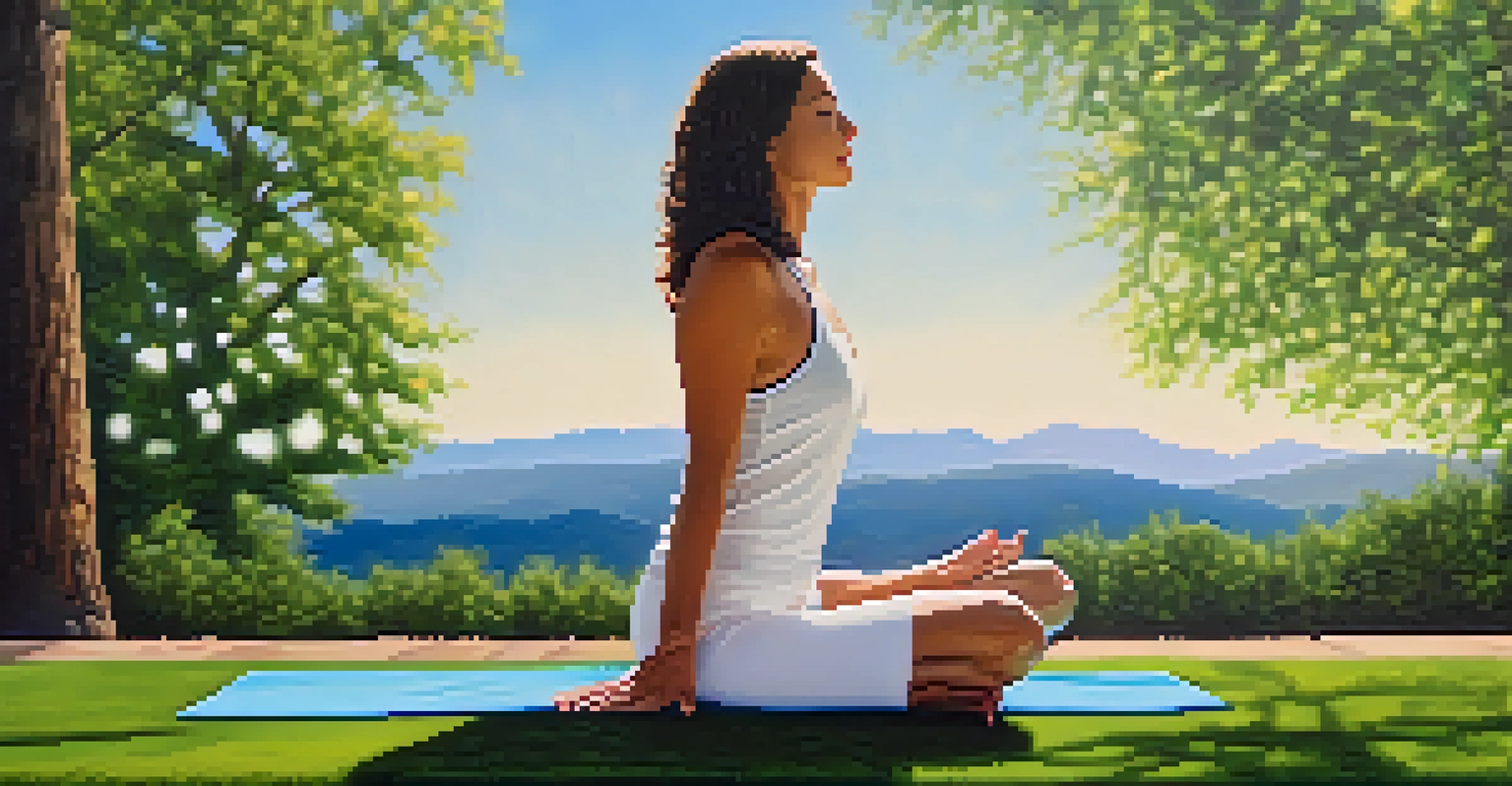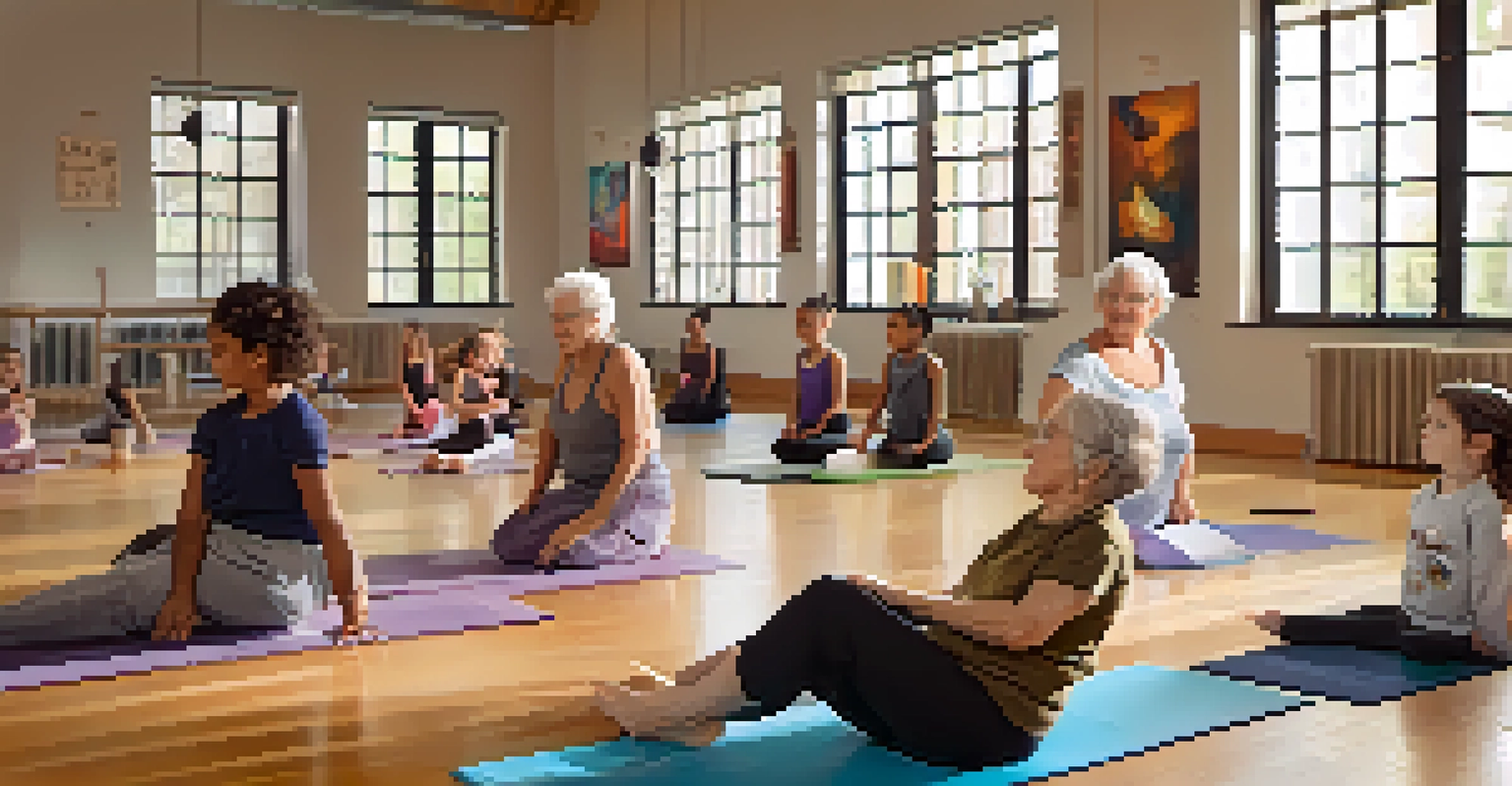Iyengar Yoga: Precision and Alignment in Practice

Understanding the Foundations of Iyengar Yoga
Iyengar Yoga, founded by B.K.S. Iyengar, emphasizes precision and alignment in every pose. Unlike other styles, it focuses on the details of each posture, ensuring practitioners build strength and flexibility safely. This attention to detail helps students understand their bodies better and fosters a deeper connection to their practice.
Yoga is the journey of the self, through the self, to the self.
At its core, Iyengar Yoga is about cultivating awareness. By paying close attention to alignment, practitioners can discover how each pose affects their body and mind. This methodical approach not only improves physical health but also encourages mindfulness, making it a holistic practice.
Related Resource
Iyengar Yoga is accessible to all levels, from beginners to advanced practitioners. The use of props like blocks, straps, and blankets allows individuals to achieve the correct alignment without straining. This adaptability makes it a popular choice for those looking to deepen their yoga journey.
The Role of Alignment in Iyengar Yoga
Alignment is the heart of Iyengar Yoga, serving as a guide for practitioners to achieve stability and balance. Proper alignment helps prevent injuries by ensuring that the body moves in a safe and effective manner. This emphasis on form allows students to experience the intended benefits of each pose.

In practice, alignment involves understanding the relationship between different body parts. For instance, in a standing pose like Tadasana (Mountain Pose), practitioners must ensure their feet, hips, and shoulders are aligned. This not only enhances the pose but also creates a sense of grounding and support.
Precision and Alignment Matter
Iyengar Yoga emphasizes precise alignment in each pose, promoting safety and deeper body awareness.
Moreover, alignment in Iyengar Yoga extends beyond the physical realm. By focusing on alignment, practitioners cultivate mental clarity and concentration. This unified approach helps create a meditative state, allowing for a deeper exploration of the self during practice.
The Importance of Breath in Practice
Breath, or pranayama, is an essential component of Iyengar Yoga that complements alignment. Practitioners are encouraged to synchronize their movements with their breath, creating a harmonious flow. This connection helps deepen the experience of each pose and enhances overall well-being.
The body is your temple. Keep it pure and clean for the soul to reside in.
Through conscious breathing, students can learn to control their energy and focus their minds. For example, inhaling while expanding into a pose and exhaling while transitioning can create a rhythmic, dance-like quality in practice. This not only makes the practice more enjoyable but also reinforces the importance of breath awareness.
Related Resource
Incorporating breath into the practice also aids in relaxation and stress relief. As practitioners learn to breathe deeply and mindfully, they can release tension and cultivate a sense of calm. This integration of breath and movement is what makes Iyengar Yoga a truly transformative practice.
Props: Bridging the Gap to Better Alignment
One of the unique features of Iyengar Yoga is its use of props. These tools, such as blocks, straps, and bolsters, help practitioners achieve proper alignment without pushing their limits. By using props, students can explore poses more deeply and safely, regardless of their skill level.
For example, a strap can assist in achieving the correct alignment in poses like Paschimottanasana (Seated Forward Bend). The strap allows individuals to extend their arms toward their feet without straining, promoting a better understanding of the pose. This ensures that the focus remains on alignment rather than forcing the body into position.
Inclusivity for All Practitioners
The use of props and adaptable classes make Iyengar Yoga accessible to individuals of all ages and abilities.
Props not only enhance individual practice but also create a supportive community environment. In group classes, sharing props encourages collaboration and camaraderie among practitioners. This shared experience fosters a sense of belonging and enhances the overall yoga journey.
The Mental Benefits of Iyengar Yoga
While Iyengar Yoga is often celebrated for its physical benefits, its mental advantages are just as significant. The focus on precision and alignment encourages mindfulness, allowing practitioners to quiet their minds and be present in the moment. This mental clarity can lead to reduced stress and increased overall well-being.
Practicing Iyengar Yoga regularly can also enhance concentration and focus. As students work through complex poses, they learn to direct their attention inward, honing their ability to concentrate on tasks outside of yoga. This skill can be invaluable in everyday life, improving productivity and mental resilience.
Related Resource
Moreover, the structured nature of Iyengar Yoga provides a sense of stability and routine. For many, this predictability can be comforting, creating a safe space to explore emotions and thoughts. This emotional exploration can lead to profound personal growth and self-discovery.
Iyengar Yoga for All: Inclusivity in Practice
One of the standout features of Iyengar Yoga is its commitment to inclusivity. Practitioners of all ages, abilities, and backgrounds can find a place within this practice. The use of props allows everyone to participate, making it accessible for those with physical limitations or chronic conditions.
Iyengar Yoga's adaptability extends to its community-focused approach. Many studios offer classes specifically designed for seniors, children, and individuals with disabilities. This dedication to inclusivity creates a welcoming atmosphere where everyone can experience the benefits of yoga.
Breath Enhances the Experience
Integrating breath with movement in Iyengar Yoga fosters relaxation, mindfulness, and a transformative practice.
Furthermore, the teachings of Iyengar Yoga emphasize self-acceptance and personal growth. Practitioners are encouraged to listen to their bodies and honor their unique journeys. This philosophy fosters a culture of support and encouragement, allowing individuals to thrive both on and off the mat.
Finding Your Path: Choosing the Right Iyengar Yoga Class
Navigating the world of yoga can be overwhelming, especially when it comes to choosing the right class. Iyengar Yoga offers a variety of options, from beginner classes focusing on foundational postures to advanced sessions challenging experienced practitioners. Understanding your goals can help guide your decision.
Consider starting with a beginner class if you're new to yoga. This will introduce you to the principles of alignment and the use of props. As you become more comfortable, you can explore intermediate or specialized classes that delve deeper into specific postures or themes.

Don't hesitate to discuss your needs with instructors before joining a class. They can provide valuable insight and recommend the best fit for your experience level. Finding the right class can enhance your journey and ensure you get the most out of your Iyengar Yoga practice.